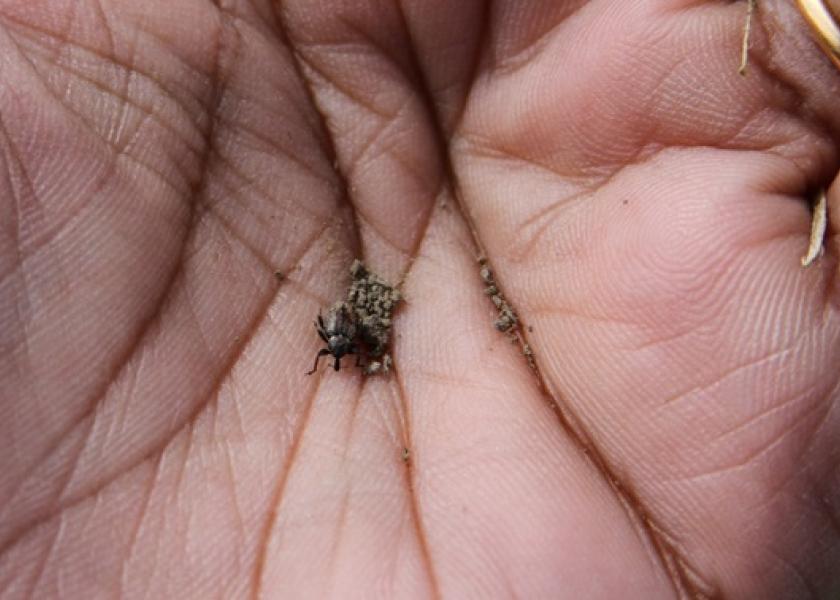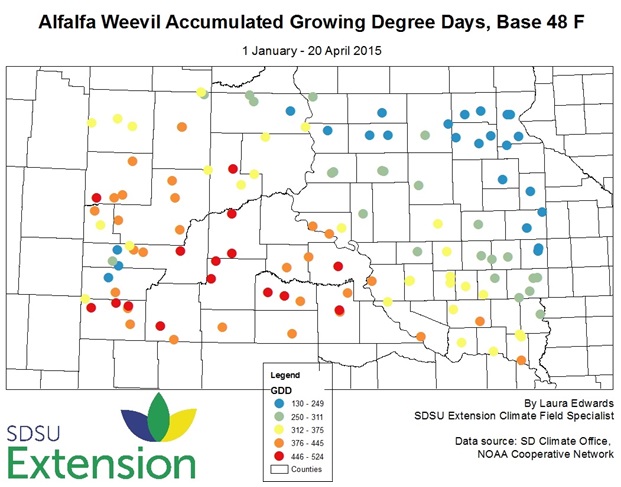Are Alfalfa Weevils Out Yet?

By: Anitha Chirumamilla, SDSU Extension Entomology Field Specialist
This is the most common question I am getting from growers and the short answer is yes. A recent survey of alfalfa fields in the Nisland and Vale areas showed that the weevils are out with minimal activity. The early warm temperatures we experienced this spring are favorable for insect activity and we have already seen army cutworms feeding in winter wheat and alfalfa fields. In western South Dakota, alfalfa fields are green with 5 to 6 inches of growth on average. Although the rainfall events in the past 10 days helped with the moisture issues, the intermittent cool temperatures might have slowed the alfalfa growth.
Growing Degree Days: Influence on weevil activity
The overwintered adult weevils need a minimum of 200 accumulated degree days to begin mating and laying eggs. The growing degree day (GDD) map for alfalfa weevils (Figure 1, developed with 48° F as a base temperature starting from January 1) shows that the majority of the state surpassed the minimum GDD requirements for weevil activity by April 20. However, there are few adult weevils (Figure 2) and larvae seen in the fields which could be attributed to the intermittent cool weather. On close inspection, tiny shot-holes (Figure 3) were evident in unfolded leaves, which is characteristic of early weevil feeding damage. The adult weevils are hidden in the plant debris or at the base of the plant and are very hard to spot in the field.
Scouting for Weevils
The best way to scout for weevils at this point is to look for the shot holes in leaves and to proceed with the ‘bucket sampling’ method. Bucket sampling involves collecting about 30 alfalfa stems randomly by walking in a ‘W’ pattern and beating them hard into the bucket to count the dislodged larvae. Since the larvae are very small and feeding inside the leaf buds, visual sampling or sweep net sampling is not ideal at this time. For more information on sampling technique and economic thresholds for alfalfa weevils based on GDDs and plant height, refer to our previously published Spring is Here: Watch out for alfalfa weevils article.
It is important to scout for alfalfa weevil populations from an early stage of crop growth for successful weevil management. With more warm weather in forecast, growers are advised to be on look-out for increased weevil activity in the next couple of weeks.







